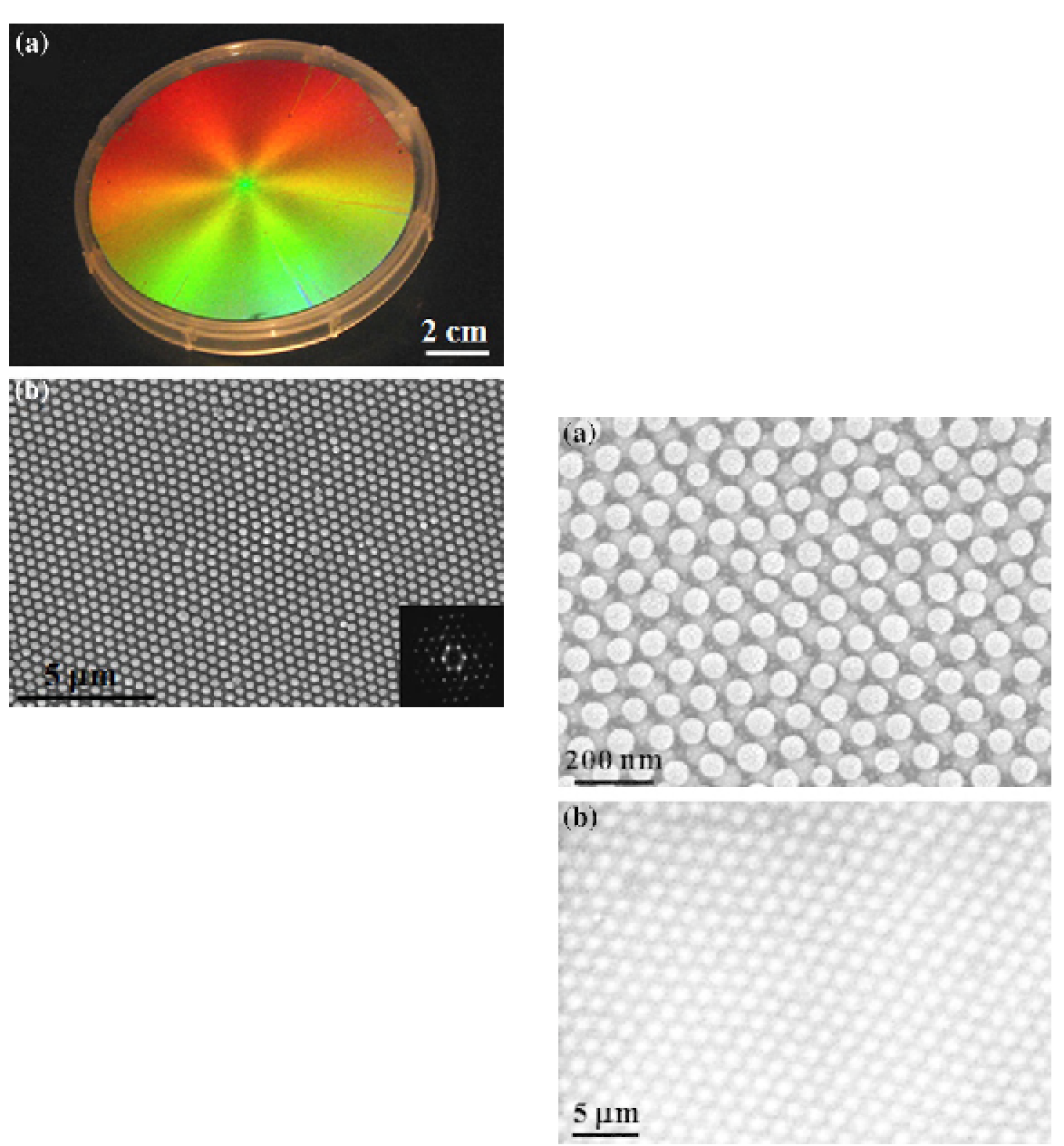Biomedical Engineering Reference
In-Depth Information
Two samples made from 70-nm (
Figure 12.5
a)
to 1,320-nm (
Figure 12.5
b) diameter silica parti-
cles show similar long-range hexagonal ordering
and center-to-center distance (around 1.41
D
) to
those of submicrometer-sized spheres (
Figures
12.3 and 12.4
). The well-established microemul-
sion method was used to synthesize monodis-
persed silica nanoparticles with 70-nm diameter
[118, 119]
. Higher spin-coating speed and longer
coating durations are needed to align 70-nm par-
ticles than their submicrometer-sized counter-
parts
[106]
. This is not surprising, since the
FIGURE 12.4
(a) Photograph of a non-close-packed
monolayer colloidal crystal made by spin coating. (b) Typical
top-view SEM image of the monolayer sample. Inset showing
a Fourier transform of a 40
×
40
μ
m
2
region. Reprinted with
permission from
Appl Phys Lett
89
(2006), 011908. Copyright
2006, American Institute of Physics.
The wide range of particle diameters achieva-
ble with the spin-coating technique is another
advantage over older self-assembly methods (e.g.,
convective self-assembly), since quick gravita-
tional sedimentation of large silica spheres
(>400 nm) causes serious problems in making
high-quality crystals
[82]
. Given the short spin-
coating and photopolymerization time (in min-
utes), the formidable challenge of sedimentation
can be completely avoided. With the spin-coating
technique, monodispersed silica colloids with a
wide diameter range from 70 nm to 2
μ
m can be
assembled to form 3D ordered colloidal crystals
[98, 99, 106]
.
FIGURE 12.5
Typical top-view SEM images of spin-coated
colloidal crystals with different sphere sizes. (a) A sample
made from 70-nm-diameter spheres and coated at 10,000 rpm
for 10 min. (b) A sample made from 1,320-nm-diameter
spheres and coated at 600 rpm for 120 s. Adapted with permis-
sion from
J Am Chem Soc
126
(2004), 13778-13786. Copyright
2004, American Chemical Society. Adapted from Ref. 106.

